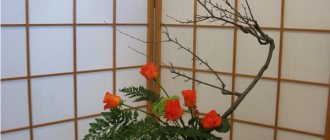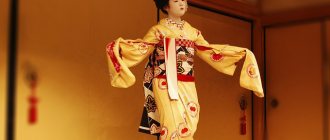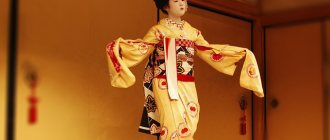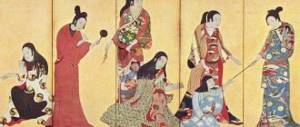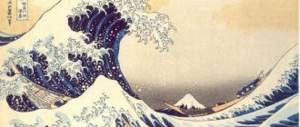Pioneers of performance art. What Japanese Art of the 1950s Means Today
Documenting the creative process of Akira Kanayama and Kazuo Shiraga
Superflat only took shape in the 2000s. But artistic events that were significant for world art began in Japan much earlier - and even earlier than in the West.
The performative turn in art occurred at the turn of the 60s and 70s of the last century. In Japan, performance art appeared in the fifties.
For the first time, the Gutai Group has shifted its focus from creating self-sufficient objects to the process of producing them. From here it’s one step away from abandoning the art object in favor of an ephemeral event.
Although individual artists from Gutai (there were 59 of them in total over twenty years) actively existed in the international context, the understanding of Japanese post-war art as a collective activity in general began in the West only recently. The boom came in 2013: several exhibitions in small galleries in New York and Los Angeles, “Tokyo 1955–1970: The New Avant-Garde” at MoMA and a large-scale historical retrospective “Gutai: Splendid Playground” at the Guggenheim Museum. Moscow's import of Japanese art seems to be an almost belated continuation of this trend.
Sadamasa Motonaga. Work (Water) at the Guggenheim Museum
It's amazing how contemporary these retrospective exhibitions look. For example, the central object of the exhibition at the Guggenheim Museum is a reconstruction of Work (Water) by Sadamasa Motonaga, in which the levels of the museum rotunda are connected by polyethylene tubes with colored water. They resemble brush strokes that have been torn from the canvas, and exemplify Gutai's central focus on "concreteness" (as the band's name translates from Japanese), the materiality of the objects with which the artist works.
Many Gutai participants received an education related to classical nihonga painting, many are biographically tied to the religious context of Zen Buddhism, to its characteristic Japanese calligraphy. All of them found a new, procedural or participatory approach to ancient traditions. Kazuo Shiraga recorded videos of himself painting his monochromes, anticipating Rauschenberg, with his feet, and even created paintings in public.
Minoru Yoshida transformed flowers from Japanese prints into psychedelic objects - an example of this is Bisexual Flower, one of the first kinetic (moving) sculptures in the world.
The curators of the exhibition at the Guggenheim Museum talk about the political significance of these works:
“Gutai demonstrated the importance of free individual action, the subversion of spectatorial expectations, and even stupidity as ways to counter the social passivity and conformity that, over several decades, allowed a militaristic government to gain a critical mass of influence, invade China, and then join World War II.”
Good and wise. Why did artists leave Japan for America in the 1960s?
Gutai was the exception to the rule in post-war Japan. Avant-garde groups remained marginal, the art world was strictly hierarchical. The main path to recognition was participation in competitions held by recognized associations of classical artists. Therefore, many preferred to go to the West and integrate into the English-language art system.
It was especially difficult for women. Even in the progressive Gutai, the share of their presence did not reach even a fifth. What can we say about traditional institutions, access to which required special education. By the sixties, girls had already acquired the right to it, but training in art (unless it was a decorative one, which was part of the skill set of ryosai kenbo
- a good wife and wise mother) was a socially disapproved activity.
Yoko Ono. Cut Piece
The story of the emigration of five powerful Japanese artists from Tokyo to the States became the topic of Midori Yoshimoto’s study “Into Performance: Japanese Women Artists in New York.” Yayoi Kusama, Takako Saito, Mieko Shiomi and Shigeko Kubota decided to move to New York at the start of their careers and worked there, including on modernizing the traditions of Japanese art. Only Yoko Ono grew up in the United States - but she, too, deliberately refused to return to Japan, having become disillusioned with the artistic hierarchy of Tokyo during a short stay in 1962-1964.
Ono became the most famous of these five - not only as the wife of John Lennon, but also as the author of proto-feminist performances dedicated to the objectification of the female body. There are obvious parallels between Ono's Cut Piece, in which viewers could cut off pieces of the artist's clothing, and Marina Abramovic's Ri.
The emergence of European styles
Next comes the Taisho period. At this time, young artists who left to study in foreign schools come back to their homeland. Naturally, they bring with them new styles of Japanese painting, which are very similar to European ones. Impressionism and post-impressionism appear.
At this stage, many schools are being formed in which ancient Japanese styles are being revived. But it is impossible to completely get rid of Western tendencies. Therefore, we have to combine several techniques in order to please both lovers of the classics and fans of modern European painting.
Some schools are funded by the state, thanks to which it is possible to preserve many of the national traditions. Private owners are forced to follow the lead of consumers who wanted something new; they were tired of the classics.
On short legs. How to take Tadashi Suzuki's original acting training
In the case of Ono and Gutai, the methods and themes of their work, separated from the authors, became internationally significant. There are other forms of export - when the artist’s work is received with interest on the international stage, but the method itself is not borrowed due to its specificity. The most striking case is the acting training system of Tadashi Suzuki.
The Suzuki Theater is loved even in Russia - and this is not surprising. The last time he visited us was in 2021 with the play “The Trojan Women” based on the texts of Euripides, and in the 2000s he came several times with productions of Shakespeare and Chekhov. Suzuki transferred the action of the plays to the current Japanese context and offered non-obvious interpretations of the texts: he discovered anti-Semitism in Ivanov and compared it with the disdainful attitude of the Japanese towards the Chinese, and transferred the action of King Lear to a Japanese madhouse.
Suzuki built his system in opposition to the Russian theater school. At the end of the 19th century, during the so-called Meiji period, a modernizing imperial Japan experienced a rise in opposition movements. The result was a large-scale Westernization of a previously extremely closed culture. Among the imported forms was the Stanislavsky system, which still remains one of the main directorial methods in Japan (and in Russia).
Suzuki exercises
In the sixties, when Suzuki began his career, the thesis was increasingly spreading that, due to their physical characteristics, Japanese actors could not get used to the roles from Western texts that filled the then repertoire. The young director managed to offer the most convincing alternative.
Suzuki's system of exercises, called the grammar of the legs, includes dozens of ways to sit, even more to stand and walk.
His actors usually play barefoot and, due to the lowering of the center of gravity, appear as heavy as possible, tied to the ground. Suzuki teaches them and foreign performers his technique in the village of Toga, in ancient Japanese houses filled with modern equipment. His troupe gives only about 70 performances a year, and the rest of the time they live, almost never leaving the village and having no time for personal matters - only work.
The center in Toga appeared in the seventies, it was designed at the request of the director by the world famous architect Arata Isozaka. Suzuki's system might seem patriarchal and conservative, but he himself talks about Toga in modern terms of decentralization. Back in the mid-2000s, Suzuki understood the importance of exporting art from the capital to the regions and organizing local production points. According to the director, Japan's theater map is in many ways similar to Russia's - the arts are concentrated in Tokyo and several smaller centers. The Russian theater could also use a company that regularly goes on tour to small towns and is based far from the capital.
SCOT Company Center in Toga
Edo
Edo is far from the first and not the last school of Japanese painting, but it brought a lot of new things to culture. Firstly, it is the brightness and colorfulness that were added to the usual technique, performed in black and gray tones. Sotasu is considered the most outstanding artist of this style. He created classic paintings, but his characters were very colorful. Later he switched to nature, and most of his landscapes were painted against gilded backgrounds.
Secondly, during the Edo period, exoticism, the namban genre, appeared. It used modern European and Chinese techniques that were intertwined with traditional Japanese styles.
And thirdly, the Nanga school appears. In it, artists first completely imitate or even copy the works of Chinese masters. Then a new branch appears, which is called bunjing.
Flower paths. What resource has modern theater discovered in the noh and kabuki systems?
The Suzuki method grows out of two ancient Japanese traditions - Kabuki. It's not just that these types of theater are often characterized as walking art, but also the more obvious details. Suzuki often follows the rule that all roles are played by men and uses characteristic spatial solutions, for example, the hanamichi (“path of flowers”) of the kabuki example—a platform extending from the stage into the depths of the auditorium. He also uses very recognizable symbols like flowers and scrolls.
Of course, in the global world there is no talk about the privilege of the Japanese to use their national forms.
The theater of one of the most significant directors of our time, the American Robert Wilson, was built on borrowings from it.
He not only uses masks and makeup that remind the mass audience of Japan, but also borrows methods of acting based on maximum slow motion and self-sufficient expressiveness of gesture. Combining traditional and ritualistic forms with cutting-edge lighting scores and minimalist music (one of Wilson's most famous works is the production of Philip Glass's Einstein on the Beach), Wilson essentially produces the synthesis of origins and relevance that much contemporary art strives for.
Robert Wilson. "Einstein on the Beach"
From noh and kabuki grew one of the pillars of modern dance - butoh, literally translated - dance of darkness. Created in 1959 by choreographers Kazuo Ono and Tatsumi Hijikata, who also relied on a low center of gravity and concentration on the legs, butoh represented the translation of reflections on traumatic war experiences into the physical dimension.
“They showed a body that was sick, decaying, even monstrous, monstrous. <…> The movements are either slow, or deliberately sharp, explosive. For this, a special technique is used, when the movement is carried out as if without using the main muscles, due to the bone levers of the skeleton,” dance historian Irina Sirotkina writes butoh into the history of liberation of the body, connecting it with the departure from ballet normativity. She compares butoh with the practices of dancers and choreographers of the early 20th century - Isadora Duncan, Martha Graham, Mary Wigman, and talks about the influence on later “postmodern” dance.
A fragment of a dance by Katsura Kan, a modern successor to the butoh tradition
Today, butoh in its original form is no longer an avant-garde practice, but a historical reconstruction.
However, the vocabulary of movement developed by Ono, Hijikata and their followers remains a valuable resource for modern choreographers. In the West it is used by Dimitris Papaioannou, Anton Adasinsky and even in the video for “Belong To The World” by The Weekend. In Japan, the continuer of the butoh tradition is, for example, Saburo Teshigawara, who will come to Russia in October. Although he himself denies any parallels with the dance of darkness, critics find quite recognizable signs: a seemingly boneless body, fragility, and silent steps. True, they are already placed in the context of postmodern choreography - with its high tempo, jogging, work with post-industrial noise music.
Saburo Teshigawara. Metamorphosis
Eternal Suibokuga
Japanese sumi-e painting, or suibokuga, literally means “ink painting.” This determines the style and technique of this art. It came from China, but the Japanese decided to call it their own. And initially the technique did not have any aesthetic side. It was used by monks for self-improvement while studying Zen. Moreover, they first drew pictures and subsequently trained their concentration while viewing them. The monks believed that strict lines, blurry tones and shadows - all that is called monochrome - help to improve.
Japanese ink painting, despite the wide variety of paintings and techniques, is not as complex as it might seem at first glance. It is based on only 4 plots:
- Chrysanthemum.
- Orchid.
- Plum branch.
- Bamboo.
A small number of plots does not make mastering the technique quick. Some masters believe that learning lasts a lifetime.
Despite the fact that sumi-e appeared a long time ago, it is always in demand. Moreover, today you can meet masters of this school not only in Japan, it is widespread far beyond its borders.
Locally global. How is contemporary Japanese art similar to Western art?
The works of Teshigawara and many of his colleagues fit seamlessly into the programs of the best Western contemporary dance festivals. If you quickly look at the descriptions of performances and performances that were shown at Festival/Tokyo - the largest annual show of Japanese theater, it will be difficult to notice fundamental differences from European trends.
One of the central themes is site-specificity - Japanese artists explore the spaces of Tokyo ranging from clumps of capitalism in the form of skyscrapers to marginal areas of otaku concentration.
Another topic is the elaboration of intergenerational misunderstanding, theater as a place of live meeting and organized communication of people of different ages. Projects dedicated to her by Toshiki Okada and Akira Tanayama were brought to Vienna for several years in a row to one of the key European festivals of performative arts. By the end of the 2000s, there was nothing new in bringing documentary materials and personal stories to the stage, but the curator of the Vienna Festival presented these projects to the public as an opportunity for live, targeted contact with another culture.
Another main line is working through traumatic experiences. For the Japanese, it is associated not with the Gulag or the Holocaust, but with the bombing of Hiroshima and Nagasaki. The theater refers to it constantly, but the most powerful statement about atomic explosions as the moment of genesis of all modern Japanese culture still belongs to Takashi Murakami.
for the exhibition “Little Boy: The Arts of Japan's Exploding Subculture”
“Little Boy: The Arts of Japan's Exploding Subculture” is the title of his curatorial project, shown in New York in 2005. “Little Boy” - “baby” in Russian - is the name of one of the bombs dropped on Japan in 1945. Collecting hundreds of manga comics from leading illustrators, distinctive vintage toys, and memorabilia based on famous anime - from Godzilla to Hello Kitty, Murakami increased the concentration of cute - kawaii - in the museum space to the limit. At the same time, he launched a selection of animations in which the central images were pictures of explosions, bare earth, and destroyed cities.
This contrast became the first large-scale statement about the infantilization of Japanese culture as a way to cope with post-traumatic stress disorder.
Now this conclusion seems obvious. Inuhiko Yomota's academic research on kawaii is based on it.
There are also later traumatic triggers. The most important are the events of March 11, 2011, the earthquake and tsunami that led to a major accident at the Fukushima nuclear power plant. At Festival/Tokyo 2018, an entire program of six performances was dedicated to understanding the consequences of a natural and technological disaster; they also became the theme for one of the works presented at Solyanka. This example clearly shows that the arsenal of critical methods in Western and Japanese art is not fundamentally different. Haruyuki Ishii creates an installation of three televisions that play high-tempo, looped footage from television programs about the earthquake on a loop.
“The work is made up of 111 videos that the artist watched daily on the news until the moment when everything he saw began to be perceived as fiction,” the curators explain. "New Japan" is a striking example of how art does not resist interpretation based on national myths, but at the same time a critical eye reveals that the same interpretation could be relevant to art of any origin. The curators discuss contemplation as the basis of Japanese tradition, drawing on quotes from Lao Tzu. At the same time, leaving aside, as it were, almost all contemporary art is focused on the “observer effect” (that’s the name of the exhibition) - be it in the form of creating new contexts for the perception of familiar phenomena or in raising the question of the possibility of adequate perception as such.
Imagined Communities is another work by video artist Haruyuki Ishii
Game
However, one should not think that Japan in the 2010s represents a concentration of progressiveness.
The habits of good old traditionalism and love for Orientalist exoticism have not yet been overcome. “Theater of Virgins” is the title of a rather admiring article about the Japanese Takarazuka Theater in the Russian conservative magazine PTZh. Takarazuka appeared at the end of the 19th century as a business project to attract tourists to the remote city of the same name, which accidentally became the terminus of a private railway. Only unmarried girls perform in the theater, who, according to the railroad owner’s plan, were supposed to attract male spectators to the city. Today, Takarazuka functions like an industry - with its own TV channel, a busy concert program, even a local amusement park. But only unmarried girls still have the right to be in the troupe - let’s hope that at least they don’t check their virginity.
However, Takarazuka pales in comparison to the Toji Deluxe club in Kyoto, which the Japanese also call a theater. They show a completely wild, judging by the description of New Yorker columnist Ian Buruma, striptease show: several naked girls on stage turn the demonstration of their genitals into a public ritual.
Like many artistic practices, this show is based on ancient legends (with the help of a candle and a magnifying glass, men in the audience could take turns exploring the “secrets of the mother goddess Amaterasu”), and the author himself was reminded of the Noh tradition.
We’ll leave the search for Western analogues for “Takarazuki” and Toji to the reader - they are not difficult to find. Let us only note that a significant part of contemporary art is aimed at combating such practices of oppression - both Western and Japanese, ranging from superflat to butoh dance.
Ancient Japan
The first styles of Japanese painting appear in the most ancient historical period of the country, even BC. e. Then art was quite primitive. First, in 300 BC. BC, various geometric shapes appeared, which were made on pottery using sticks. Such a discovery by archaeologists as ornamentation on bronze bells dates back to a later time.
A little later, already in 300 AD. e., rock paintings appear, which are much more diverse than geometric patterns. These are already full-fledged images with images. They were found inside crypts, and, probably, the people who are painted on them were buried in these burial grounds.
In the 7th century AD e. Japan adopts writing that comes from China. Around the same time, the first paintings came from there. Then painting appears as a separate sphere of art.


